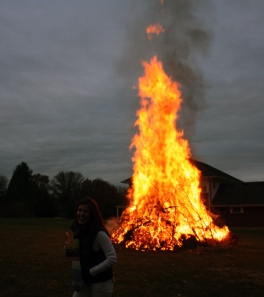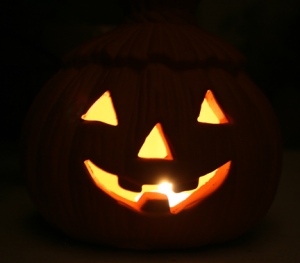Many elementary schools have banned the traditional Halloween school party for a watered-down version called the “Harvest Party.” Evidently, this quasi-religious holiday continues to receive its share of objections from a number of fronts, including Christianity, Judaism and Islam. Throw in the atheists, who don’t like anything resembling religion anywhere, and you have a holiday without a home.
I contend there isn’t another holiday that embraces multiculturalism as much as a good, old-fashioned Halloween party. And since we should all be about embracing diversity and multiculturalism, Halloween should be a required event in every school.
What other holiday represents as many traditions, cultures and history than Halloween? Celtic, Roman, English, Irish, Scottish, American…heck, Halloween should be a world history and sociology teacher’s dream.
Ancient origins date “Halloween” back to the Celtic Druids. The harvest festival was called Samhein (sow-in). To celebrate the event, the Celts built bonfires. Townspeople gathered around these fires to say goodbye to the harvest season and usher in the dark days of winter. Celtic priests dressed up in animal skins to predict the year’s future.

a shot of our traditional fall bonfire party
It was thought that the night before the new year, the realm between the living and the deceased was opened and spirits could return to make mischief. On that night, people were afraid of the deceased spirits and dressed in costume to avoid being recognized by an unfriendly ghost. They would put food out to distract them from entering homes. Hmmm, that sounds familiar.
Rome conquered the Celts in 29 AD and introduced Pomona, the goddess of fruit and (nut?) trees. Her symbol is…the apple. Now, we dip apples in caramel, bob for apples, make apple pies etc.
In 800 AD Christianity established All Saints Day (All-Hallows) on Nov 1st to honor saints and martyrs (and to combat the Celts pagan celebration). The night before was All-Hallows Eve. All Souls Day, another day to honor the dead, was set for Nov 2nd. The three celebrations became known as Hallowmas…now called, Halloween.
Traditions brought across the pond with the colonials were fall parties, celebrated with bonfires, costumes and story-telling. It was more social than anything else. Trick-or-treating is an English tradition of poor people begging for “soul-cakes’ … food in exchange for praying for dead relatives.
The Jack O’Lantern is an Irish legend about Stingy Jack who tricked the Devil. To read the complete legend, go to http://bit.ly/3k2PV4 . It’s a fun legend about how NOT to cross God or Satan and expect to have a home in the afterlife!

It wasn’t until the 1400s that witches, demons and satanic worship was associated with the holiday. And that was largely due to the Roman Catholic Church fueling of the fear of witchcraft in Europe. Their fear of wicca (literally meaning “wise woman”), made up mainly of women, was unacceptable to the male-dominated religion of the day.
So, you see, Halloween is a plethora of diverse cultural traditions, all melded together into one delicious holiday. So let us all embrace diversity, dress up and go begging for candy!

interesting post !
LikeLike
Great point! I am currently doing my second observation at an elementary school here in St. Charles and one of the mothers from my class wrote the teacher a letter regarding how halloween should be banned from the public classroom due to it’s religious ties. I think my teacher and the mother will find this article very informative and I hope they both take it to heart.
LikeLike
and it really does look like you set your neighbors house on fire in the bonfire picture
LikeLike
Yes, I know! LOL! it’s really much further away than it looks!
LikeLike